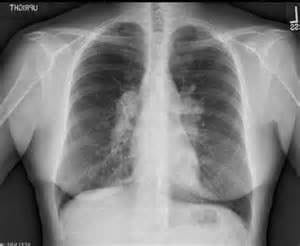According to the Shillong Times, a study published in the New England Journal of Medicine has reported intriguing results when treating sarcoidosis with an already-approved rheumatoid arthritis medication.
What is Sarcoidosis?
Sarcoidosis is a condition where small areas of inflamed tissue (called granulomas) grow around the body in places like the lungs, eyes, and skin. There are several existing treatments including the administration of steroids, but these treatments are sometimes risky and not always reliable.
A treatment for one kind of sarcoidosis may not be effective in treating another kind. Side effects from prolonged treatment are also of concern for physicians.
The cause of the condition is still unknown. Scientists have theorized that certain people may have a genetic predisposition to developing it, and it’s currently presumed that sarcoidosis is triggered by airborne particles including bacteria, dust, or chemicals.
If left untreated, the condition can lead to blindness, permanent lung scarring, kidney failure, and even death.
Hope in Unusual Places
When examining information from prior studies on arthritis medication tofacitinib, scientists noticed the drug may prove effective in treating sarcoidosis patients.
Over several months, a 48-year-old patient was given a daily dose of tofacitinib (two pills a day). At the conclusion of the examination period, physicians noted that the patient’s skin lesions had almost completely disappeared.
The drug is designed to block the Jak-STAT pathway, and the encouraging observations have prompted scientists to inquire further about Jak-STAT’s role in sarcoidosis development. Dr. Nkiruka Emeagwali, a clinical fellow at Yale University and the co-author of the NEJM study, has stated that the group will examine the role of the Jak-STAT pathway in over 200 patients with lung and multi-organ sarcoidosis in a clinical trial.
Dr. Brett King, the study’s lead author, was highly optimistic about the potential of Jak-STAT inhibitors for treating sarcoidosis patients – citing its safety and efficiency in treating an aspect of sarcoidosis that is notoriously difficult to control, the development of skin lesions.
The test patient in question had been treated with a number of approved sarcoidosis medications before tofacitinib, and her skin lesions failed to respond to most of them. However, when administered tofacitinib, she enjoyed a clinical and histologic remission in her lesions. When taken off tofacitinib, the patient’s disease relapsed. When treatment resumed, again, her cutaneous lesions were driven into remission.
No side effects were observed in the patient, prompting even more excitement in the scientists. Future clinical study will hopefully shed light on the nature of the Jak-STAT pathway in sarcoidosis, as well as the efficacy of tofacitinib as a method of treatment. However, as clinical trials have yet to begin, FDA approval for tofacitinib in treating sarcoidosis is, at the very earliest, years away – pending success in its trial.
Despite advances in medical research, there are still many diseases whose causes and contributing factors we are unaware of. How might the exponentially growing availability of scientific publications increase the amount of cross-discipline cooperation in scientific communities? Do you believe this will lead to more discoveries being made faster? Share your thoughts with Patient Worthy!







